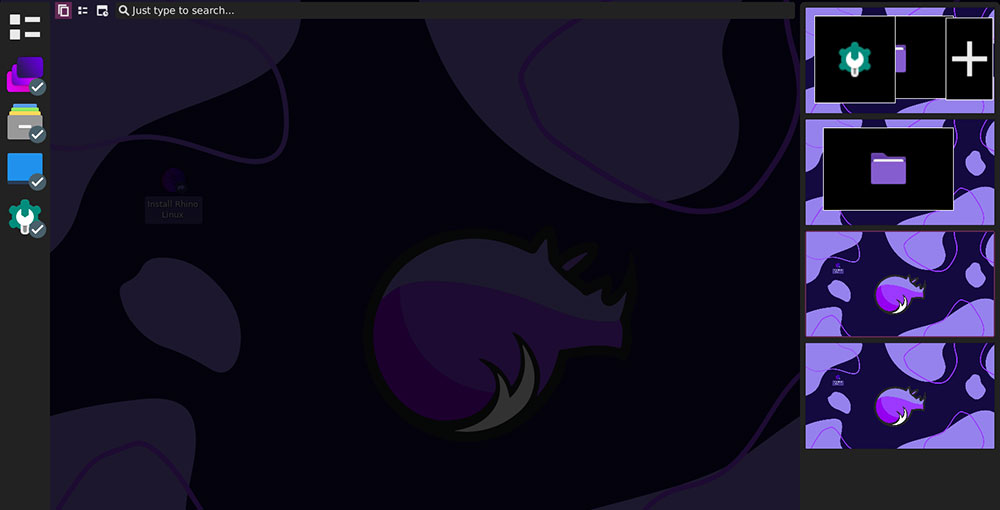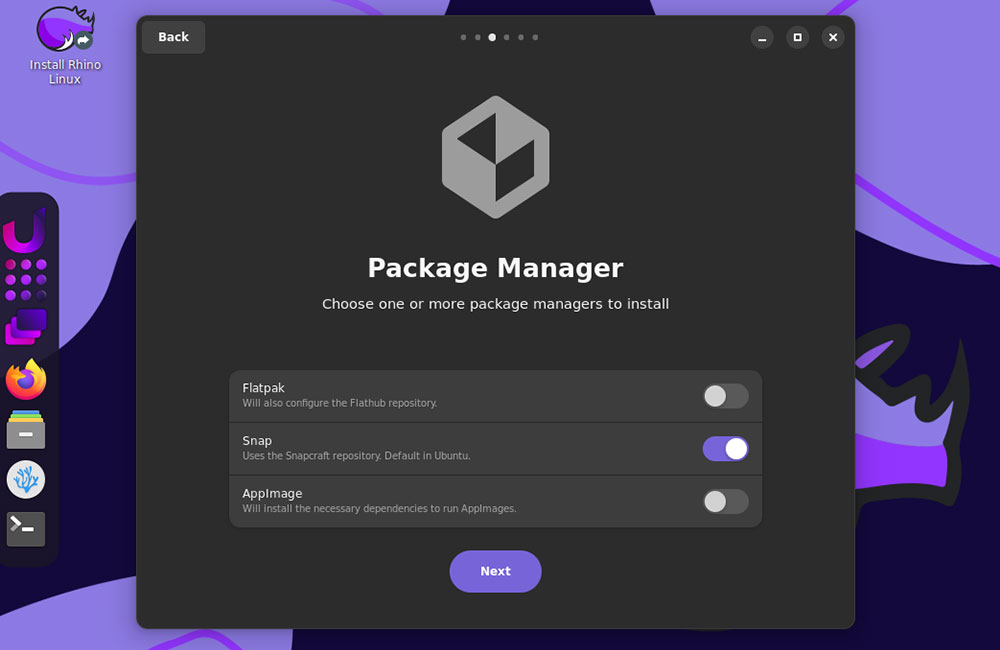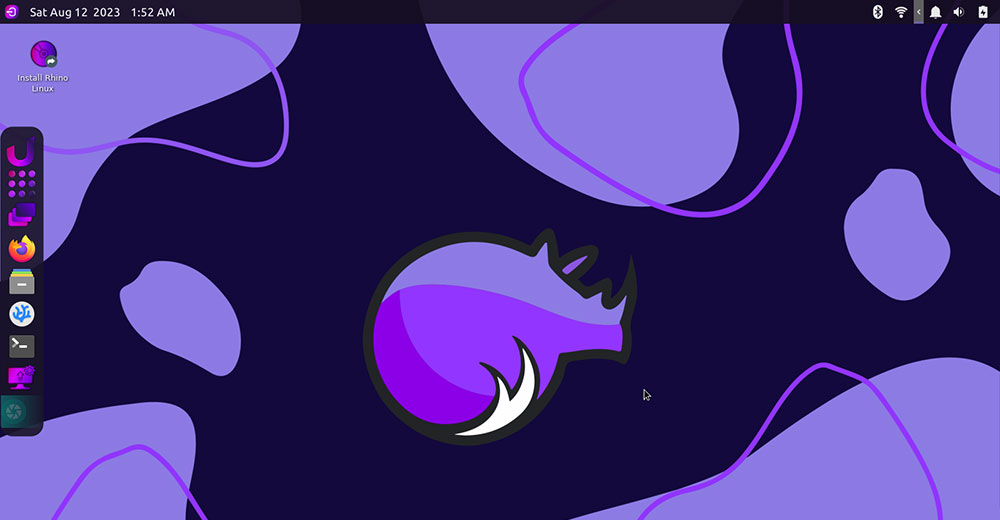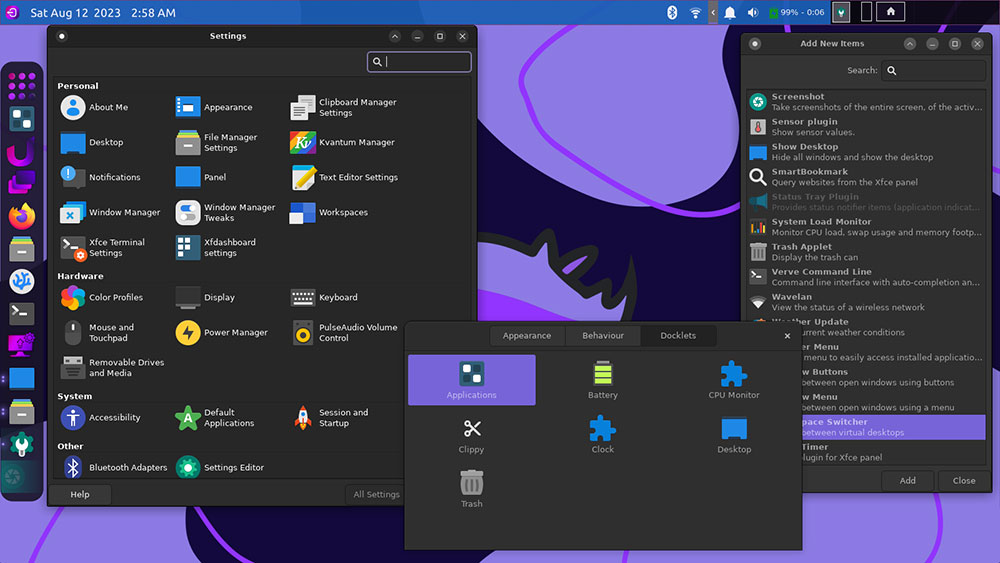The arrival of the first stable version of Rhino 2023.1 last week is a treat well worth the long wait through six beta releases.
This new Linux distribution succeeds last October’s discontinued Rolling Rhino Remix project. Ironically, the original developer of that remix release, AJ Strong, the desktop lead and founder, did the follow-up.
In a world of many lookalike Ubuntu distros, it is the first to come with rolling releases, so you always have the latest version of the OS based on the Ubuntu development branch. Rhino Linux is more a hybrid than a cookie-cutter repeat of other Ubuntu-based offerings.
Rolling releases are not every Linux user’s ideal upgrade method. Constantly updating OS components as developers tweak their distros can produce unexpected user issues.
But the Ubuntu code base has a proven track record for reliability. Running fail-safe safety nets like Timeshift makes reverting to an untroubled previous update quick and straightforward.
I reviewed one of the last beta versions of Rhino Linux in July. I was super impressed with its functionality and the potential to provide even more.
In that review, I opined that it takes an already fine Xfce desktop and blends in elements of the GNOME graphical interface to create a hybrid desktop design well worth experiencing. This first non-beta release takes an already polished beta and turns it into a computing platform that is enjoyable to see and easy to use thanks to well-oiled settings options.
Alluring Concept Pursued
Strong confided in his release notes that the initial remix version was a quick, small hobby project he slapped together with little to no care for a bit of fun. But when he found people using it, his perspective changed.
“This became unmaintainable in the long run, and so in October 2022, I came up with a new vision for how I wanted my desktop operating system to go,” he wrote.
The left window shows the panel controls. Notice the highlighted Lock panel option. Unchecking it allows you to drag the panel to the screen’s bottom edge. The right window shows more settings for the desktop’s appearance.
The remix environment goes a long way in upping the distro’s usability and likability. Still, its chief adorning trait might well be the rolling release delivery.
Rebuilding From Scratch
The developer team created new system apps to bring the Ubuntu rolling release concept to life. For instance, the in-house desktop, Unicorn, offers an eye-pleasing and lightweight interface based on the latest Xfce 4.18 desktop environment.
Its heavily modified design uses features borrowed from classic GNOME. One key example is the App Grid menu that fills the entire screen. Another GNOME relic is the right-side slide-out panel of virtual workspaces.
A fully populated settings panel provides a wide range of control over how the desktop appears and behaves, a hallmark of the Xfce structure (left window). Another control menu (right window) makes it easy to add items to the Xfce panel. The bottom window shows the three levels of desktop set-up.
Xfce’s workplace switcher is also embedded for usability options. You can launch it from the Plank. This desktop element, though, is one of my remaining gripes about the desktop’s design (more on this later). You can also change virtual desktops from a desktop switcher you add to the panel.
The integrated Ulauncher tool is lightweight and highly customizable. It is written in Python and is Wayland-compatible. Those details may not mean much to newer Linux users, but it signals the degree of modern styling under the Rhino Linux hood.
Touring the Unicorn Desktop
The Unicorn desktop anchors the Plank-style utility bar along the left edge of the screen as it did in the beta versions. The utility bar serves as a lightweight holding area to pin frequently used applications. It also shows icons of running apps on other desktops, making it easy to close them without going to the open app’s location.

Clicking an icon in the Plank displays a new vertical panel along with the traditional GNOME virtual desktop view that slides out from the screen’s right edge.
For me, this side-displayed minimal Plank has limited usefulness. Even the panel across the top has limited facility compared to a traditional, fully functional Xfce panel.
I could live with just a full-blown panel without the Plank or vice-versa. I tend to think that fellow power users would agree with this assessment.
In a classic Xfce desktop, the panel has much more functionality. At least I could drag it from the top to the bottom. Panel placement is more of a personal preference. Yet positioning it atop the screen is reminiscent of Linux from yesteryear.
The Plank mirrors the vertical icon lineup on the screen’s left edge, mimicking the standard Ubuntu layout. I would like to see the developers tweak this functionality in the next release.
Under the Hood Dynamics
The distro is powered by the most up-to-date Linux kernel, 6.4, accompanied by Systemd 253, PipeWire 0.3.76, and Mesa 23.1.3. Again, less fussy Linux users might not care, but seasoned Linux users can certainly focus on this as a selling point to adopt Rhino Linux.
The adaptable Calamares installer makes the installation process quick and effortless. The live session ISO performed flawlessly, even on my aging Dell laptop with 8GB RAM.
The in-house built Pacstall package manager is quite innovative. Its main advantage is the versatility to manage software from numerous sources. With it, you search, install, remove, and update packages from multiple package managers’ repositories — DEB repos, Pacstall, Flathub, Appimage, and Snap Store. Simple terminal outputs enhance and ease the user experience.

Rhino Linux lets you integrate up to three additional package managers into Pacstall.
Depending on your choice during installation, this RPK system automatically configures everything you need for the respective software source. Convenience does not get much better.
This approach borrows a nifty feature from Arch-based Linux distros. Pacscripts contain the necessary contents to build ready-to-install packages for the Rhino Linux system. Nala, a frontend for the APT terminal command, also sets a new usability standard over APT.
But fear not the terminal. In this distro, you can use GUI-driven package processes completely free of terminal windows.
Bottom Line
Three editions are available — a generic ISO for x86_64/ARM64, an ISO for the experimental PinePhone, and the Raspberry Pi ISO. Most likely, you should select the generic ISO, then click the download button for your computer’s architecture type.
PinePhone is an interesting concept but not necessary for desktop or laptop use. This version for the PinePhone is a Rhino Linux port for PinePhone devices based on the latest version of Ubuntu Touch (20.04); it is the first Xfce-based mobile environment.
One major drawback to Rhino Linux version 2023.1 is its Arch Linux-like sparsity of included software. No doubt, this was an effort to make the download as minimal as possible.
Regardless, rather than leave it up to new users to track down productive software, the developers should provide some fancy scripting to allow pre-bundled applications to download after system installation completes.
The default installation only includes Firefox 116 Web Browser, Mousepad 0.6.1 Simple Text Editor, mpv 0.36 Media Player, and VSCodium 1.80.1 integrated development environment (IDE). However, the installation also includes nearly two full screens of tools.
Suggest a Review
Is there a Linux software application or distro you’d like to suggest for review? Something you love or would like to get to know?
Email your ideas to me, and I’ll consider them for a future column.
And use the Reader Comments feature below to provide your input!























































